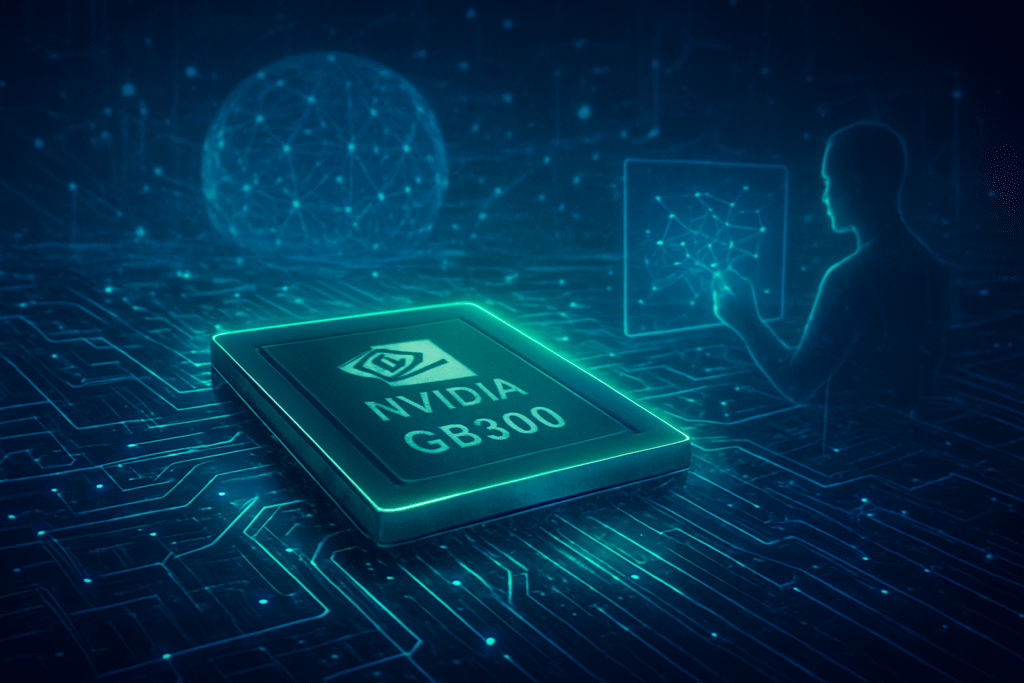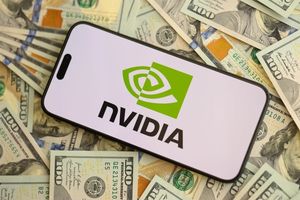
In a strategic move set to redefine the landscape of artificial intelligence, Microsoft (NASDAQ: MSFT) has committed a staggering $9.7 billion to secure access to NVIDIA's (NASDAQ: NVDA) next-generation GB300 AI processors. Announced in early November 2025, this colossal multi-year investment, primarily facilitated through a partnership with AI infrastructure provider IREN (formerly Iris Energy), is a direct response to the insatiable global demand for AI compute power. The deal aims to significantly bolster Microsoft's AI infrastructure, providing the critical backbone for the rapid expansion and advancement of its flagship AI assistant, Copilot, and its burgeoning cloud-based artificial intelligence services, Azure AI.
This massive procurement of cutting-edge GPUs is more than just a hardware acquisition; it’s a foundational pillar in Microsoft's overarching strategy to achieve "end-to-end AI stack ownership." By securing a substantial allocation of NVIDIA's most advanced chips, Microsoft is positioning itself to accelerate the development and deployment of increasingly complex large language models (LLMs) and other sophisticated AI capabilities, ensuring its competitive edge in the fiercely contested AI arena.
NVIDIA's GB300: The Engine of Next-Gen AI
Microsoft's $9.7 billion investment grants it access to NVIDIA's groundbreaking GB300 GPUs, a cornerstone of the Blackwell Ultra architecture and the larger GB300 NVL72 system. These processors represent a monumental leap forward from previous generations like the H100 and A100, specifically engineered to handle the demanding workloads of modern AI, particularly large language models and hyperscale cloud AI services.
The NVIDIA GB300 GPU is a marvel of engineering, integrating two silicon chips with a combined 208 billion transistors, functioning as a single unified GPU. Each GB300 boasts 20,480 CUDA cores and 640 fifth-generation Tensor Cores, alongside a staggering 288 GB of HBM3e memory, delivering an impressive 8 TB/s of memory bandwidth. A key innovation is the introduction of the NVFP4 precision format, offering memory efficiency comparable to FP8 while maintaining high accuracy, crucial for trillion-parameter models. The fifth-generation NVLink provides 1.8 TB/s of bidirectional bandwidth per GPU, dramatically enhancing multi-GPU communication.
When deployed within the GB300 NVL72 rack-scale system, the capabilities are even more profound. Each liquid-cooled rack integrates 72 NVIDIA Blackwell Ultra GPUs and 36 Arm-based NVIDIA Grace CPUs, totaling 21 TB of HBM3e memory and delivering up to 1.4 ExaFLOPS of FP4 AI performance. This system offers up to a 50x increase in overall AI factory output performance for reasoning tasks compared to Hopper-based platforms, translating to a 10x boost in user responsiveness and a 5x improvement in throughput per megawatt. This drastic improvement in compute power, memory capacity, and interconnectivity is vital for running the massive, context-rich LLMs that underpin services like Azure AI and Copilot, enabling real-time interactions with highly complex models at an unprecedented scale.
Reshaping the AI Competitive Landscape
Microsoft's colossal investment in NVIDIA's GB300 GPUs is poised to significantly redraw the battle lines in the AI industry, creating both immense opportunities and formidable challenges across the ecosystem.
For Microsoft (NASDAQ: MSFT) itself, this move solidifies its position as a preeminent AI infrastructure provider. By securing a vast supply of the most advanced AI accelerators, Microsoft can rapidly scale its Azure AI services and enhance its Copilot offerings, providing unparalleled computational power for its partners, including OpenAI, and its vast customer base. This strategic advantage enables Microsoft to accelerate AI development, deploy more sophisticated models faster, and offer cutting-edge AI solutions that were previously unattainable. NVIDIA (NASDAQ: NVDA), in turn, further entrenches its market dominance in AI hardware, with soaring demand and revenue driven by such large-scale procurements.
The competitive implications for other tech giants are substantial. Rivals like Amazon (NASDAQ: AMZN) with AWS, and Alphabet (NASDAQ: GOOGL) with Google Cloud, face intensified pressure to match Microsoft's compute capabilities. This escalates the "AI arms race," compelling them to make equally massive investments in advanced AI infrastructure, secure their own allocations of NVIDIA's latest chips, and continue developing proprietary AI silicon to reduce dependency and optimize their stacks. Oracle (NYSE: ORCL) is also actively deploying thousands of NVIDIA Blackwell GPUs, aiming to build one of the world's largest Blackwell clusters to support next-generation AI agents.
For AI startups, the landscape becomes more challenging. The astronomical capital requirements for acquiring and deploying cutting-edge hardware like the GB300 create significant barriers to entry, potentially concentrating advanced compute resources in the hands of a few well-funded tech giants. While cloud providers offer compute credits, sustained access to high-end GPUs beyond these programs can be prohibitive. However, opportunities may emerge for startups specializing in highly optimized AI software, niche hardware for edge AI, or specialized services that help enterprises leverage these powerful cloud-based AI infrastructures more effectively. The increased performance will also accelerate the development of more sophisticated AI applications, potentially disrupting existing products that rely on less powerful hardware or older AI models, fostering a rapid refresh cycle for AI-driven solutions.
The Broader AI Significance and Emerging Concerns
Microsoft's $9.7 billion investment in NVIDIA GB300 GPUs transcends a mere business transaction; it is a profound indicator of the current trajectory and future challenges of the broader AI landscape. This deal underscores a critical trend: access to cutting-edge compute power is becoming as vital as algorithmic innovation in driving AI progress, marking a decisive shift towards an infrastructure-intensive AI industry.
This investment fits squarely into the ongoing "AI arms race" among hyperscalers, where companies are aggressively stockpiling GPUs and expanding data centers to fuel their AI ambitions. It solidifies NVIDIA's unparalleled dominance in the AI hardware market, as its Blackwell architecture is now considered indispensable for large-scale AI workloads. The sheer computational power of the GB300 will accelerate the development and deployment of frontier AI models, including highly sophisticated generative AI, multimodal AI, and increasingly intelligent AI agents, pushing the boundaries of what AI can achieve. For Azure AI, it ensures Microsoft remains a leading cloud provider for demanding AI workloads, offering an enterprise-grade platform for building and scaling AI applications.
However, this massive concentration of compute power raises significant concerns. The increasing centralization of AI development and access within a few tech giants could stifle innovation from smaller players, create high barriers to entry, and potentially lead to monopolistic control over AI's future. More critically, the energy consumption of these AI "factories" is a growing environmental concern. Training LLMs requires thousands of GPUs running continuously for months, consuming immense amounts of electricity for computation and cooling. Projections suggest data centers could account for 20% of global electricity use by 2030-2035, placing immense strain on power grids and exacerbating climate change, despite efficiency gains from liquid cooling. Additionally, the rapid obsolescence of hardware contributes to a mounting e-waste problem and resource depletion.
Comparing this to previous AI milestones, Microsoft's investment signals a new era. While early AI milestones like the Perceptron or Deep Blue showcased theoretical possibilities and specific task mastery, and the rise of deep learning laid the groundwork, the current era, epitomized by GPT-3 and generative AI, demands unprecedented physical infrastructure. This investment is a direct response to the computational demands of trillion-parameter models, signifying that AI is no longer just about conceptual breakthroughs but about building the vast, energy-intensive physical infrastructure required for widespread commercial and societal integration.
The Horizon of AI: Future Developments and Challenges
Microsoft's $9.7 billion commitment to NVIDIA's GB300 GPUs is not merely about current capabilities but about charting the future course of AI, promising transformative developments for Azure AI and Copilot while highlighting critical challenges that lie ahead.
In the near term, we can expect to see the full realization of the performance gains promised by the GB300. Azure (NASDAQ: MSFT) is already integrating NVIDIA's GB200 Blackwell GPUs, with its ND GB200 v6 Virtual Machines demonstrating record inference performance. This translates to significantly faster training and deployment of generative AI applications, enhanced productivity for Copilot for Microsoft 365, and the accelerated development of industry-specific AI solutions across healthcare, manufacturing, and energy sectors. NVIDIA NIM microservices will also become more deeply integrated into Azure AI Foundry, streamlining the deployment of generative AI applications and agents.
Longer term, this investment is foundational for Microsoft's ambitious goals in reasoning and agentic AI. The expanded infrastructure will be critical for developing AI systems capable of complex planning, real-time adaptation, and autonomous task execution. Microsoft's MAI Superintelligence Team, dedicated to researching superintelligence, will leverage this compute power to push the boundaries of AI far beyond current capabilities. Beyond NVIDIA hardware, Microsoft is also investing in its own custom silicon, such as the Azure Integrated HSM and Data Processing Units (DPUs), to optimize its "end-to-end AI stack ownership" and achieve unparalleled performance and efficiency across its global network of AI-optimized data centers.
However, the path forward is not without hurdles. Reports have indicated overheating issues and production delays with NVIDIA's Blackwell chips and crucial copper cables, highlighting the complexities of manufacturing and deploying such cutting-edge technology. The immense cooling and power demands of these new GPUs will continue to pose significant infrastructure challenges, requiring Microsoft to prioritize deployment in cooler climates and continue innovating in data center design. Supply chain constraints for advanced nodes and high-bandwidth memory (HBM) remain a persistent concern, exacerbated by geopolitical risks. Furthermore, effectively managing and orchestrating these complex, multi-node GPU systems requires sophisticated software optimization and robust data management services. Experts predict an explosive growth in AI infrastructure investment, potentially reaching $3-$4 trillion by 2030, with AI expected to drive a $15 trillion boost to global GDP. The rise of agentic AI and continued dominance of NVIDIA, alongside hyperscaler custom chips, are also anticipated, further intensifying the AI arms race.
A Defining Moment in AI History
Microsoft's $9.7 billion investment in NVIDIA's GB300 GPUs stands as a defining moment in the history of artificial intelligence, underscoring the critical importance of raw computational power in the current era of generative AI and large language models. This colossal financial commitment ensures that Microsoft (NASDAQ: MSFT) will remain at the forefront of AI innovation, providing the essential infrastructure for its Azure AI services and the transformative capabilities of Copilot.
The key takeaway is clear: the future of AI is deeply intertwined with the ability to deploy and manage hyperscale compute. This investment not only fortifies Microsoft's strategic partnership with NVIDIA (NASDAQ: NVDA) but also intensifies the global "AI arms race," compelling other tech giants to accelerate their own infrastructure build-outs. While promising unprecedented advancements in AI capabilities, from hyper-personalized assistants to sophisticated agentic AI, it also brings into sharp focus critical concerns around compute centralization, vast energy consumption, and the sustainability of this rapid technological expansion.
As AI transitions from a research-intensive field to an infrastructure-intensive industry, access to cutting-edge GPUs like the GB300 becomes the ultimate differentiator. This development signifies that the race for AI dominance will be won not just by superior algorithms, but by superior compute. In the coming weeks and months, the industry will be watching closely to see how Microsoft leverages this immense investment to accelerate its AI offerings, how competitors respond, and how the broader implications for energy, ethics, and accessibility unfold.
This content is intended for informational purposes only and represents analysis of current AI developments.
TokenRing AI delivers enterprise-grade solutions for multi-agent AI workflow orchestration, AI-powered development tools, and seamless remote collaboration platforms.
For more information, visit https://www.tokenring.ai/.







